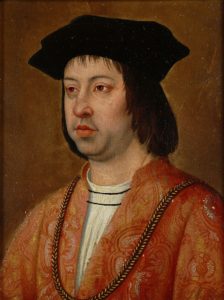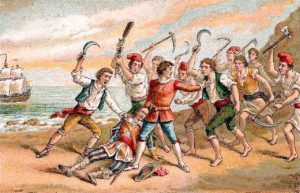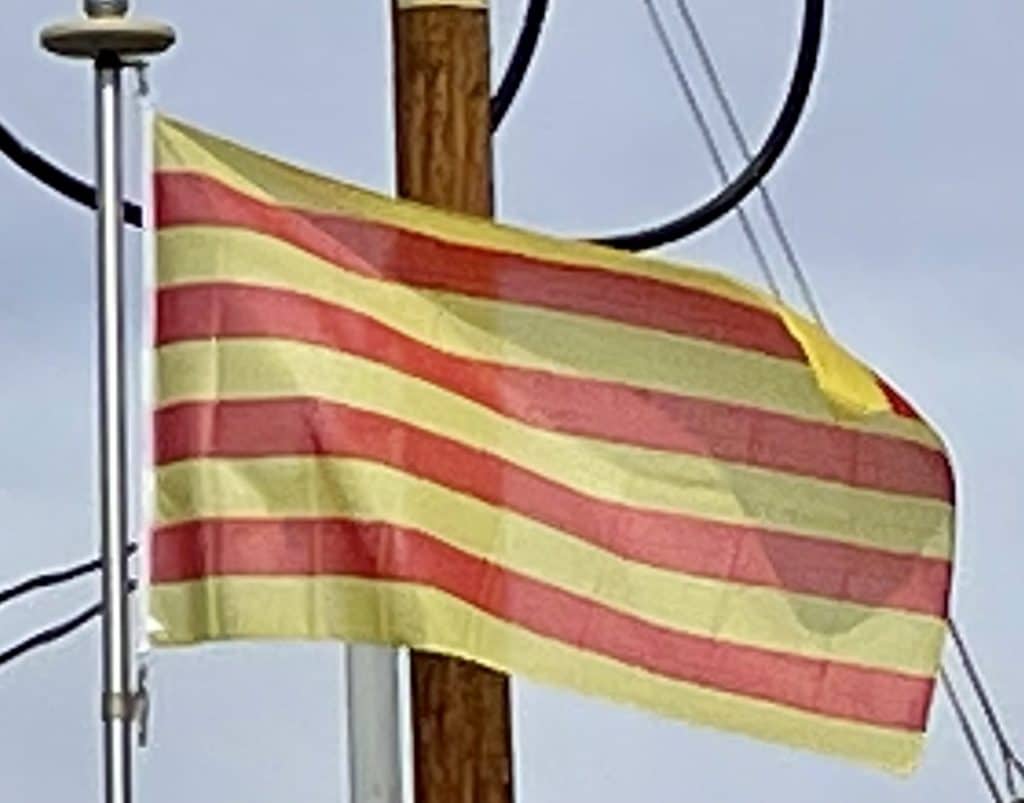
By virtue of descent from his maternal grandparents, Ferdinand II of Aragon and Isabella I of Castile, in 1516 Charles I of Spain became the first king to rule the Crowns of Castile and Aragon simultaneously by his own right. Following the death of his paternal (House of Habsburg) grandfather, Maximilian I, Holy Roman Emperor, he was also elected Charles V, Holy Roman Emperor, in 1519.
Over the next few centuries, the Principality of Catalonia was generally on the losing side of a series of wars that led steadily to an increased centralization of power in Spain. Despite this fact, between the 16th and 18th centuries, the participation of the political community in the local and the general Catalan government grew, while the kings remained absent and its constitutional system continued to consolidate. Tensions between Catalan institutions and the Monarchy began to arise. The large and burdensome presence of the Spanish royal army in the Principality due to the Franco-Spanish War led to an uprising of peasants, provoking the Reapers’ War (1640–1652), which saw Catalonia rebel (briefly as a republic led by the chairman of the Generalitat, Pau Claris) with French help against the Spanish Crown for overstepping Catalonia’s rights during the Thirty Years’ War. Within a brief period France took full control of Catalonia. Most of Catalonia was reconquered by the Spanish Monarchy but Catalan rights were recognized. Roussillon was lost to France by the Treaty of the Pyrenees (1659).
The most significant conflict concerning the governing monarchy was the War of the Spanish Succession, which began when the childless Charles II of Spain, the last Spanish Habsburg, died without an heir in 1700. Charles II had chosen Philip V of Spain from the French House of Bourbon. Catalonia, like other territories that formed the Crown of Aragon, rose up in support of the Austrian Habsburg pretender Charles VI, Holy Roman Emperor, in his claim for the Spanish throne as Charles III of Spain. The fight between the houses of Bourbon and Habsburg for the Spanish Crown split Spain and Europe.

The fall of Barcelona on 11 September 1714 to the Bourbon king Philip V militarily ended the Habsburg claim to the Spanish Crown, which became legal fact in the Treaty of Utrecht. Philip felt that he had been betrayed by the Catalan Courts, as it had initially sworn its loyalty to him when he had presided over it in 1701. In retaliation for the betrayal, and inspired by the French absolutist style of government, the first Bourbon king introduced the Nueva Planta decrees, that incorporated the lands of the Crown of Aragon, including the Principality of Catalonia, as provinces under the Crown of Castile in 1716, terminating their separate institutions, laws and rights, as well as their pactist politics, within a united kingdom of Spain. From the second third of 18th century onwards Catalonia carried out a successful process of proto-industrialization, reinforced in the late quarter of the century when Castile’s trade monopoly with American colonies ended.
Industrialization, Republic and Autonomy:
At the beginning of the nineteenth century, Catalonia was severely affected by the Napoleonic Wars. In 1808, it was occupied by French troops; the resistance against the occupation eventually developed into the Peninsular War. The rejection to French dominion was institutionalized with the creation of “juntas” (councils) who, remaining loyal to the Bourbons, exercised the sovereignty and representation of the territory due to the disappearance of the old institutions. Napoleon took direct control of Catalonia to establish order, creating the Government of Catalonia under the rule of Marshall Augereau, and making Catalan briefly an official language again. Between 1812 and 1814, Catalonia was annexed to France and organized as four départements. The French troops evacuated Catalan territory at the end of 1814. After the Bourbon restoration in Spain and the death of the absolutist king Ferdinand VII, Carlist Wars erupted against the new born liberal state of Isabella II. Catalonia was divided, the coast and most industrialized areas support liberalism, while many inland areas were in the hands of Carlists, as the last ones proposed to reestablish the institutional systems suppressed in the Nueva Planta decrees in all the ancient realms of the Crown of Aragon.
